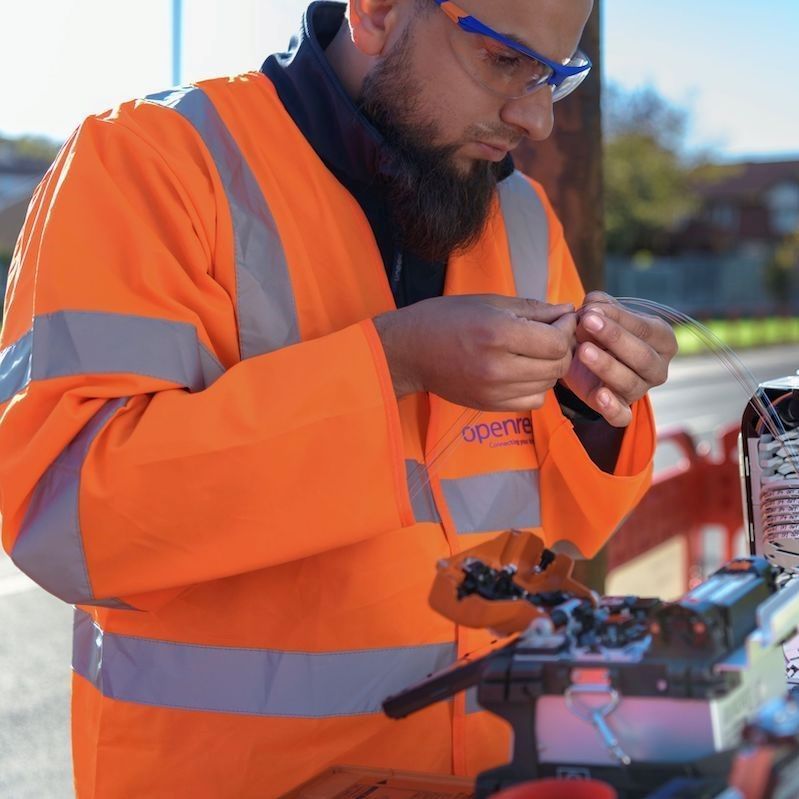Too many sub-scale firms are building high-speed networks, but mergers and acquisitions will be difficult to execute well.

Oliver Bradley recalls his stint advising the British government on broadband in 2015. "No one was building fiber," said the managing director for digital infrastructure investing at Macquarie Capital. Gavin Patterson, the dashing boss of telecom incumbent BT, was keener to lavish money on the rights to screen top-flight football than he was on digging up streets to lay fiber-optic cable. Sweating every drop of value out of the operator's last-mile copper networks was the preferred approach to broadband.
What a difference seven years makes. In place of the fiber desert is an expanding jungle of cable lines twisting underground and overhead, far more than the country will need for its future broadband services. In June, Point Topic, an analyst firm, estimated that some 3 million UK homes would end up with a choice of more than five providers. The drought has been succeeded by a flood.
Figure 1:  A BT engineer handling fiber cables.
A BT engineer handling fiber cables.
(Source: BT)
It was the word Bradley used when describing his experience and current assessment of the market at last week's Network X show in Amsterdam. "We created a fund that saw private-sector investment flood in," he said. The rationale the government accepted was that a surge in infrastructure-based broadband competition would spur BT to upgrade its ageing systems. "We have gone too far the other way," said Bradley. More than 70 companies, big and small, are now investing in full-fiber rollout, he reckons. "It is not efficient."
From a government and user perspective, a fiber glut must sound better than yesteryear's drought. Before private-sector funds began flowing into fiber, the UK featured just two large infrastructure players – BT, the former state-owned telecom monopoly, and Virgin Media, a cable operator – and only BT had a nationwide presence. Knowing higher speeds do not guarantee higher sales, it had little commercial incentive to throw billions at full-fiber networks. Critics rounded on it for keeping the UK in the slow lane of European broadband.
Broadband domination
A useful proxy for BT's dominance of the UK wholesale market for broadband connectivity is the take-up rate – actual subscriptions as a percentage of homes passed by the Openreach network. For the fiscal year ending in March 2019, when BT first started publishing these numbers, around 27.48 million homes were passed by what the operator calls "superfast" broadband, meaning technology that can support download speeds of "up to" 76 Mbit/s. At the same time, Openreach also claimed to be supporting 21.12 million broadband connections. The take-up rate, in other words, was an astonishing 77%.
Figures published by Point Topic, a market research firm, also illustrate BT's market power. For the 2017 fiscal year, BT's share of the wholesale local access (WLA) market was more than 80%, according to Point Topic. Despite the best efforts of Virgin Media (now Virgin Media O2) and various alternative operators (altnets) to chip away at its business, BT's WLA market share was not much below 80% last year.
Want to know more about 5G? Check out our dedicated 5G content channel here on Light Reading.
Unless it falls dramatically, the UK could be left with a fiber giant surrounded by dozens of broadband weaklings. For sure, the take-up rate for Openreach's full-fiber product is much lower than it is for superfast broadband, hitting 26% in June. But that is probably because consumers have little interest in upgrading, and not a sign of altnet vigor. Philip Jansen, BT's current CEO, was scathing about the altnet challenge back in July.
"On overbuild, there is lots of building going on but not much connecting," he said. "Everyone is realizing there will be a lot of trouble for some of the altnets. If you add up everyone's ambition, their stated aims, the amount of money being raised, it is clear a lot of people won't make it."
Galvanizing BT
Five overlapping networks in a single neighborhood is clearly too many, according to Nokia, one of the biggest suppliers to the UK's broadband market. The Finnish vendor reckons the average full-fiber deployment takes between 12 and 14 years to generate a return if the take-up rate is about 30%. That is probably not an issue for investment funds with a long-term outlook, but even they might balk at a take-up rate much lower.
Market observers expect a wave of consolidation to sweep the market next year, with one stakeholder who spoke on condition of anonymity predicting a messy 2023 for some firms. The problem is that many of the UK's broadband ventures are still at the planning stage. Any deals would therefore involve paying for infrastructure that doesn't even exist, says Bradley. "They haven't really connected that many people, they've got more network to build, and they want to sell."
One possible scenario he envisages would involve mergers between companies at a similar point in their development. "You could say we've got two companies here and we've both got pipeline. We can merge," he said. "It doesn't matter what each one of us is worth. What's important is what the relative split is."
Done smartly, this piecing together of separate broadband plans could eliminate the risk of five-player neighborhoods and produce companies with the muscle to challenge BT in parts of the country. Anyone fond of vibrant and competitive markets must hope so. If would be a disappointment if the only thing the altnets achieve is to galvanize BT.
Related posts:
— Iain Morris, International Editor, Light Reading
Read more about:
EuropeAbout the Author(s)
You May Also Like











